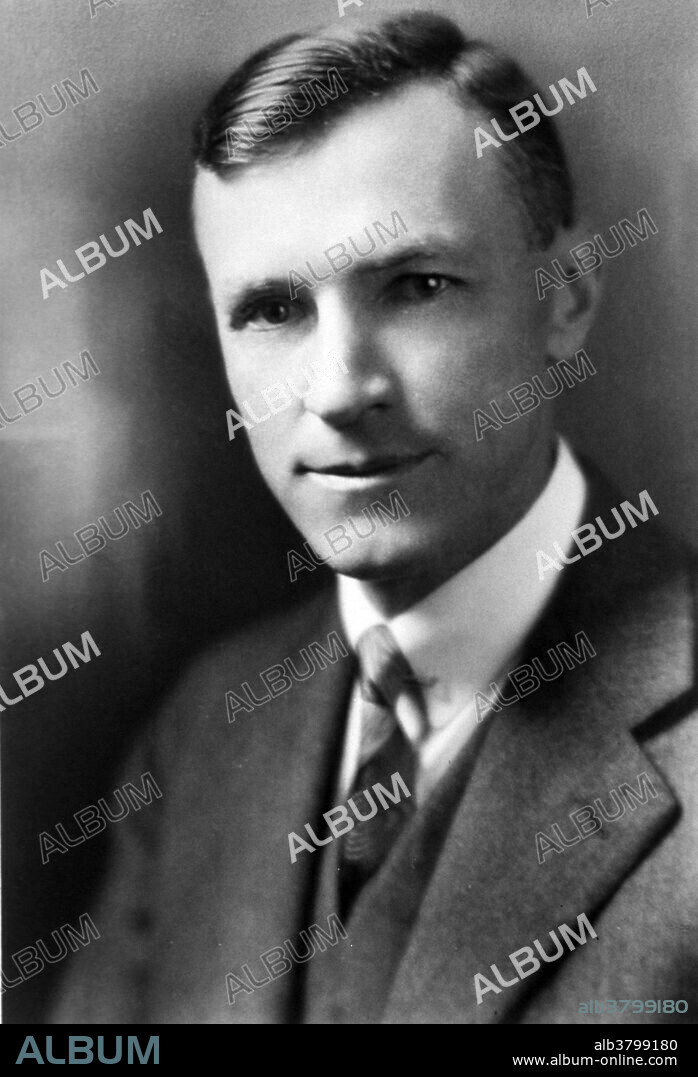alb3799180
William Murphy, American Medical Researcher

|
Add to another lightbox |
|
Add to another lightbox |



Buy this image.
Select the use:

Title:
William Murphy, American Medical Researcher
Caption:
William Parry Murphy (February 6, 1892 - October 9, 1987) was an American physician and medical researcher who shared the Nobel Prize in Physiology or Medicine in 1934 with george Minot and George Whipple for their combined work in devising and treating anemia. He completed his A.B. degree in 1914 from the University of Oregon. He completed his M.D. in 1922 from Harvard Medical School. In 1924, Murphy bled dogs to make them anemic, and then fed them various substances to gauge their improvement. He discovered that ingesting large amounts of liver seemed to restore anemia more quickly of all foods. Minot and Whipple then set about to chemically isolate the curative substance. The active ingredient, found serendipitously, was not iron, but rather a water-soluble extract containing a new substance. From this extract, chemists were ultimately were able to isolate vitamin B12 from the liver. Even before the vitamin had been completely characterized, the knowledge that raw liver and its extracts treated pernicious anemia (previously a terminal disease) was a major advance in medicine. He died at the age of 95.
Credit:
Album / NLM/Science Source
Releases:
Model: No - Property: No
Rights questions?
Rights questions?
Image size:
2700 x 3960 px | 30.6 MB
Print size:
22.9 x 33.5 cm | 9.0 x 13.2 in (300 dpi)
Keywords:
1892 • 1934 • 1987 • 20 XX TWENTIETH CENTURY • 20TH CENTURY • 20TH • AMERICA • AMERICAN • ANAEMIA • ANEMIA • BLOOD DISEASE • BW • CELEBRITIES • CELEBRITY • DISCOVERER • EXPLORER • FAMOUS PEOPLE • FAMOUS • FIGURE • HISTORIC • HISTORICAL DOCTOR • HISTORICAL PHYSICIAN • HISTORICAL • HISTORY • IMPORTANT • MALE • MALIGNANT ANAEMIA • MALIGNANT ANEMIA • MAN • MEDICAL RESEARCHER • MEDICAL • MEDICINAL • MEDICINE • MEN • MURPHY • NOBEL LAUREATE • NOBEL PRIZE LAUREATE • NOBEL PRIZE RECIPIENT • NOBEL PRIZE WINNER • NOBEL PRIZE • NOBEL RECIPIENT • NOBEL WINNER • NOBEL • NOBELIST • NOTABLE • PEOPLE • PERNICIOUS ANAEMIA • PERNICIOUS ANEMIA • PERSON • PERSONALITIES • PERSONALITY • PHOTO • PHOTOGRAPH • RESEARCH • RESEARCHER (MALE) • RESEARCHER • SCIENCE • TERMINAL DISEASE • TWENTIETH CENTURY • UNITED STATES • US • USA • VITAMIN B 12 • WELL-KNOWN • WILLIAM MURPHY • WILLIAM PARRY MURPHY
 Pinterest
Pinterest Twitter
Twitter Facebook
Facebook Copy link
Copy link Email
Email
